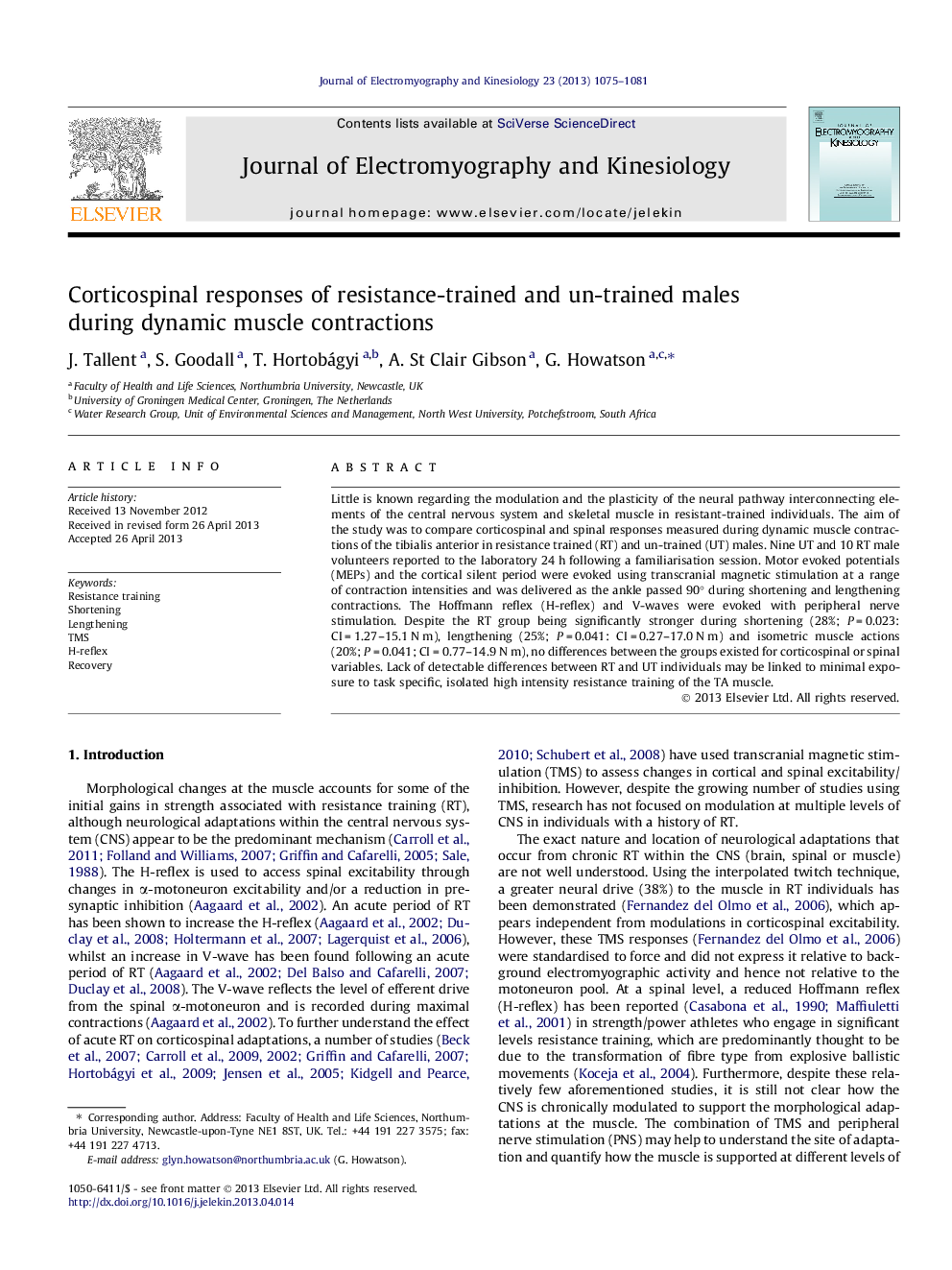| Article ID | Journal | Published Year | Pages | File Type |
|---|---|---|---|---|
| 6210524 | Journal of Electromyography and Kinesiology | 2013 | 7 Pages |
Little is known regarding the modulation and the plasticity of the neural pathway interconnecting elements of the central nervous system and skeletal muscle in resistant-trained individuals. The aim of the study was to compare corticospinal and spinal responses measured during dynamic muscle contractions of the tibialis anterior in resistance trained (RT) and un-trained (UT) males. Nine UT and 10 RT male volunteers reported to the laboratory 24 h following a familiarisation session. Motor evoked potentials (MEPs) and the cortical silent period were evoked using transcranial magnetic stimulation at a range of contraction intensities and was delivered as the ankle passed 90° during shortening and lengthening contractions. The Hoffmann reflex (H-reflex) and V-waves were evoked with peripheral nerve stimulation. Despite the RT group being significantly stronger during shortening (28%; P = 0.023: CI = 1.27-15.1 N m), lengthening (25%; P = 0.041: CI = 0.27-17.0 N m) and isometric muscle actions (20%; P = 0.041; CI = 0.77-14.9 N m), no differences between the groups existed for corticospinal or spinal variables. Lack of detectable differences between RT and UT individuals may be linked to minimal exposure to task specific, isolated high intensity resistance training of the TA muscle.
